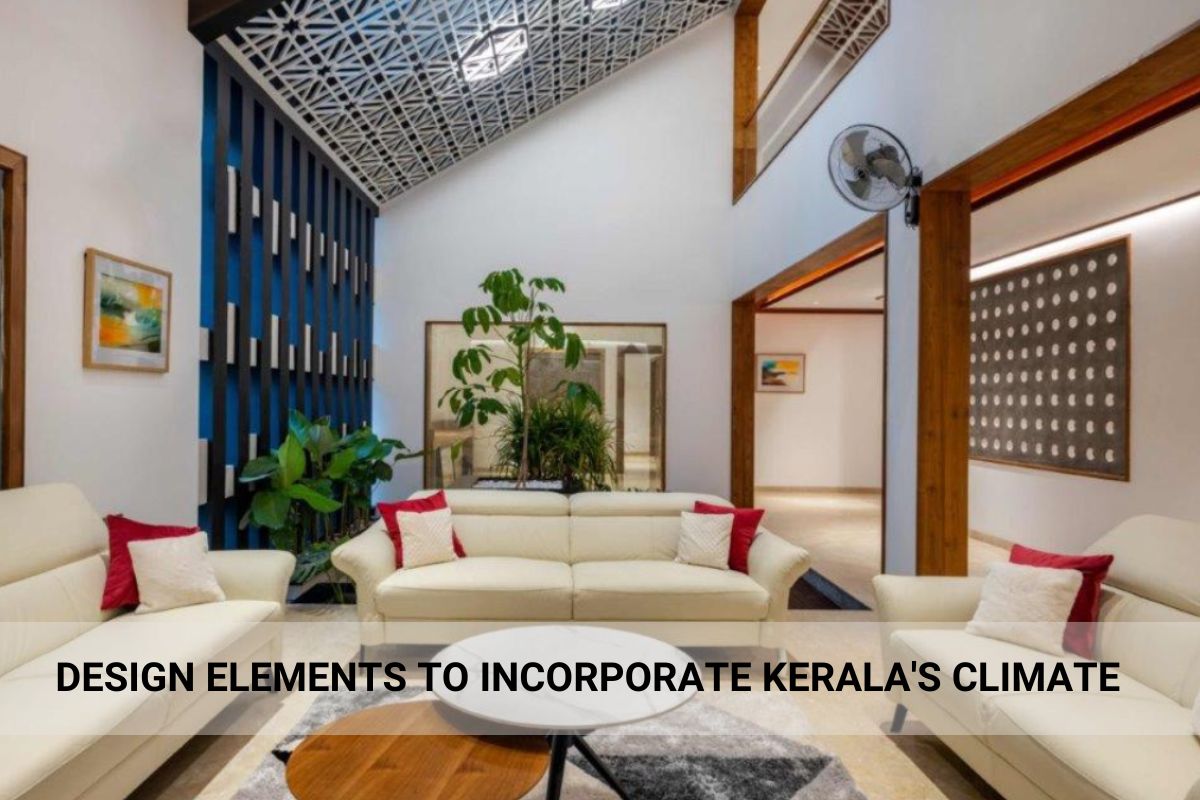Designing a perfect home in Kerala presents unique challenges and opportunities. The state's tropical climate, characterized by high humidity, heavy rains, and abundant sunshine, demands thoughtful design decisions. A well-planned custom home reflects your style and ensures comfort, sustainability, and energy efficiency throughout the year. In this blog, we’ll explore the key design elements that must be incorporated to harmonize your home with Kerala's climate, making it the ideal sanctuary.
1. Maximize Natural Ventilation
One of the most important aspects of designing a home in Kerala is ensuring ample airflow to combat the tropical heat and humidity. Natural ventilation reduces the need for artificial cooling systems, lowering energy costs while enhancing comfort.
- * Cross Ventilation: By positioning windows and doors across from each other, air flows freely, creating a cooling effect in your home. This design is essential in Kerala’s climate where cooling breezes are often available.
- * Louvered Windows: These windows are perfect for tropical regions. They allow fresh air in, even during heavy rains, and provide privacy without sacrificing ventilation.
- * High Ceilings: Tall ceilings, often coupled with large windows, allow hot air to rise, creating a cooler atmosphere in the living spaces.
2. Sloped Roofs for Rainwater Management
Kerala's intense monsoon season demands a roofing solution that can handle significant rainfall. A sloped roof with the right materials not only ensures that water flows off easily but also helps maintain the structure’s longevity.
- * Slanted Roofs: Steeply pitched roofs, often adorned with terracotta tiles or durable metal sheets, help prevent water accumulation. These roofs are particularly important in Kerala, where rainfall is heavy and frequent.
- * Rainwater Harvesting: By incorporating a rainwater harvesting system into your sloped roof, you can efficiently capture and store rainwater for future use, reducing water consumption and supporting sustainable living.
3. Thermal Insulation
Keeping your home cool during Kerala’s hot and humid days requires effective insulation to block out external heat and maintain indoor comfort. Using the right materials and techniques will make your home cooler and more energy-efficient.
- * Double-layered Walls: Insulated walls, often made from materials like brick or concrete, can keep the interior temperature comfortable by preventing heat from penetrating.
- * Roof Insulation: Attaching thermal insulation materials under the roof reduces the amount of heat absorbed by the home, which is especially important during the hot months.
4. Overhangs and Sunshades for Protection
Kerala’s direct sunlight can be intense, especially during the midday hours. Overhangs and sunshades offer essential protection from UV rays while allowing natural light into your home. These architectural features are crucial for managing sunlight and temperature, making your home cooler and more comfortable.
- * Extended Roofs: Large, overhanging roofs, often seen in Kerala’s traditional architecture, provide shade and reduce heat from direct sunlight. Verandas, with their slanted roofs, offer a comfortable outdoor space to enjoy the surroundings while staying cool.
- * Shading Techniques: Modern sunshades, including perforated Jaali walls or adjustable shutters, can be used to regulate the amount of sunlight entering your home.
5. Use of Local Materials for Sustainability
Utilizing local materials not only supports the local economy but also helps create homes that are well-suited to the local climate. These materials often have natural insulating properties and are more durable in Kerala’s tropical conditions.
- * Laterite Stone: This stone, abundant in Kerala, is both sustainable and effective for building walls that withstand humidity and heat. Its porous nature helps with cooling and moisture control.
- * Terracotta and Clay: These materials are ideal for roofing tiles, flooring, and bricks. They retain cool temperatures inside, providing a natural way to keep your home comfortable.
- * Bamboo: This eco-friendly material can be used in various elements of the home, from structural design to furniture, making it a sustainable choice for modern Kerala homes.
6. Elevated Foundations to Combat Flooding
Kerala's tropical climate also comes with the threat of flooding during the monsoon season. Elevating your home can protect it from waterlogging and moisture damage while providing better air circulation beneath the structure.
- * Raising the Foundation: Building your home on stilts or raising the foundation ensures that your house stays dry during heavy rains, particularly in areas prone to flooding.
- * Ventilated Understructures: The elevated foundation creates space for ventilation, preventing the growth of mould and dampness under the house.
7. Landscaping to Enhance Climate Adaptation
Kerala’s lush, green landscape is a gift to homeowners. Thoughtful landscaping can improve the aesthetics of your home while supporting climate adaptation.
- * Shade Trees: Planting large trees around the house not only adds beauty but also creates natural shade, cooling the surrounding area.
- * Green Roofs and Vertical Gardens: These types of gardens not only improve the visual appeal but also help reduce the heat absorbed by your home’s roof, making it cooler and more energy-efficient.
- * Efficient Drainage Systems: Landscaping should include proper drainage to prevent water accumulation during rains. Designing for proper water flow around your home can reduce the risk of flooding.
8. Smart Orientation for Energy Efficiency
The strategic orientation of your home is essential in Kerala’s climate. By carefully placing windows and doors, you can minimize heat buildup and take advantage of cool breezes.
- * North-South Orientation: This orientation helps avoid the harsh western sun, keeping interiors cooler throughout the day.
- * Strategic Window Placement: Larger windows can be installed on the north side of the home to maximize daylight without exposing the space to too much heat.
9. Sustainable Energy Solutions
Integrating sustainable energy solutions into your custom home design not only reduces your carbon footprint but also helps lower utility bills.
- * Solar Panels: Installing solar panels takes advantage of Kerala’s abundant sunshine, providing renewable energy for your home.
- * Energy-Efficient Appliances: By selecting energy-efficient appliances, LED lighting, and low-energy fans, your home will consume less power, further enhancing its sustainability.
Conclusion
Designing a custom home in Kerala is a unique opportunity to blend traditional styles with modern comforts while considering the specific needs of the tropical climate. By focusing on elements such as natural ventilation, sloped roofs, sustainable materials, and effective rainwater management, you can create a home that is not only beautiful but also practical, energy-efficient, and comfortable year-round.
Working with an experienced architect familiar with Kerala’s climate can help ensure that every aspect of your home is designed to withstand the elements while enhancing your living experience.
Your dream home is achievable with the right design and expert consultation, making Kerala’s unique climate an asset, not a challenge.


